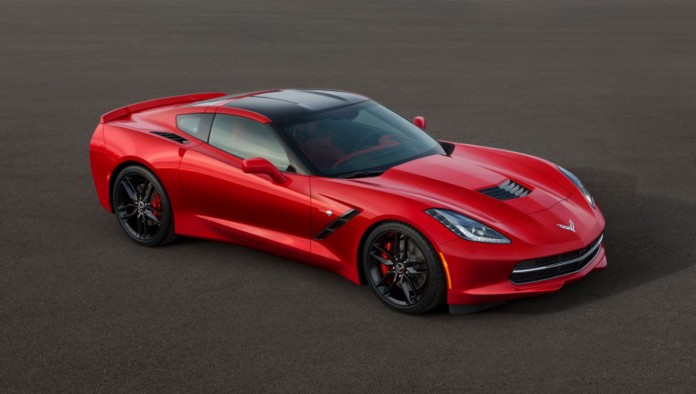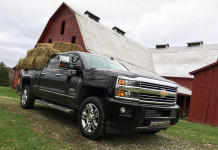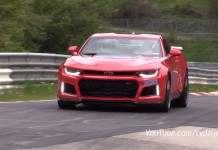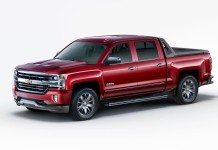After months of teaser shots and rumors, Chevrolet has finally unveiled the all-new 2014 C7 Corvette – and in a big way, too. Chevy is reviving the Stingray nameplate for the C7, a name not used since 1976.
Saying the 2014 Vette is all-new is an understatement. Chevrolet says the Stingray shares only two small parts with the outgoing C6 model. Under the hood is a brand new all-aluminum 6.2-liter V-8 completely redesigned with direct injection, Active Fuel Management, and continuously variable valve timing. The revised combustion system is said to increase power while delivering increased fuel economy – even over the C6’s 26 mpg highway rating. The new small-block bears the LT1 name and is estimated to have 450 hp and 450 lb-ft of torque.

The Stingray now mates that small-block V-8 to a rear-mounted, seven-speed manual transmission. Not only does it gain an extra gear over last year’s, it comes with what Chevrolet calls Active Rev Matching, an automated throttle control system that manipulates the engine’s rpms, automatically matching revs to the gear the manual shifter feels you’re headed for. Call it throttle-blipping for dummies. With the new LT1 and the seven-speed tranny, Chevy suspects the C7 will do 0-60 mph in 4 seconds.
Getting all that power to the pavement might be a challenge, but the Stingray comes equipped with a five-position driver-selectable knob that changes the car’s dynamics depending on the environment. Think of it as a track version of Land Rover’s Terrain Response system.
Drivers choose between Weather, Eco, Tour, Sport, or Track mode. Each setting changes the 12 different manipulatable attributes that include engine performance, magnetic suspension settings, exhaust opening, and all the electronic traction and stability controls. And with each driver setting comes a tailored information display on the huge 8-inch screen in the main instrument cluster. Chevy says they wanted to simplify and integrate the myriad of controllable functions into a seamless and easy-to-use interface.

Holding all that new mechanical hardware into place is an all-aluminum frame that’s 57 percent stiffer and 99 pounds lighter than last year’s. The Stingray achieves a perfect 50/50 weight distribution. The body now comes standard with a carbon fiber hood and a carbon fiber removable roof panel. Both items subtract weight and add class.
The hood features a huge functional vent that pulls hot air from behind the radiator. New rear quarter-panel vents deliver cold air to the transmission and differential. And keeping with corvette tradition, front quarter-panels feature vents that help pull heat from the massive front brake rotors.
Carbon fiber continues inside the cockpit as well, complementing the aluminum and hand-wrapped leather bits. To the delight of many owners and journalist, two seat options will be offered: the GT Seat and the Competition Sport Seat. The GT seat is geared towards comfort and practicality while the Sport Seat is geared for track duty with its extra bolstering. Both seats look amazing.

The new center stack has a driver-configurable 8-inch infotainment screen in addition to the other 8-inch display within the center gauge cluster. The heads-up-display returns as well. Overall the cabin looks to be light years ahead of the outgoing C6. The C7 lights its way with new HID and LED front headlamps.
For those planning on logging serious track time, Chevy offers the Z51 package. It includes an electronic limited-slip differential, dry-sump oil system, brake and transmission cooling ducts, along with a unique aero package that’s said to further improve high-speed stability.
Corvette will continue to be built in GM’s Bowling Green, KY assembly plant. The plant underwent a $131-million upgrade that includes a new body shop for manufacturing the C7’s aluminum frame, a first for Corvette.
The 2014 Corvette coupe goes on sale in the third quarter of 2013 and pricing has not been announced.










